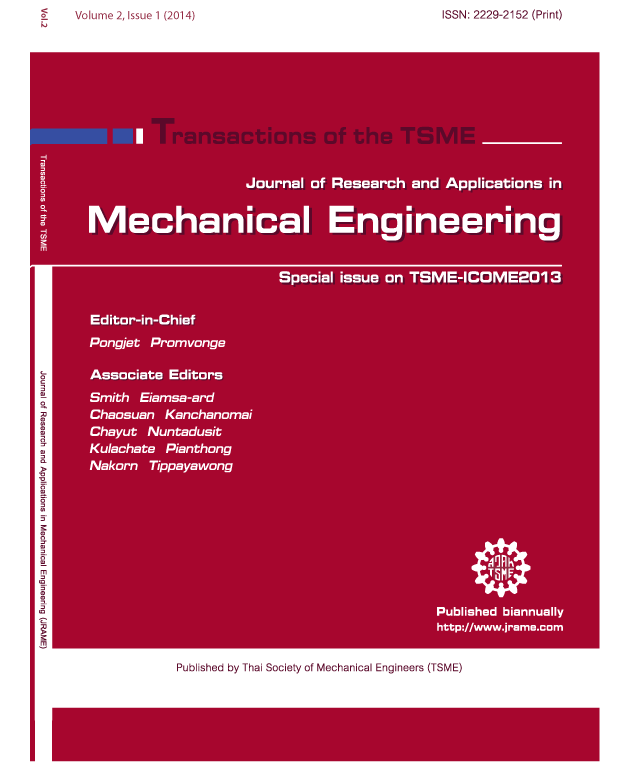Vector field path following for an autonomous underwater vehicle
Main Article Content
Abstract
The paper presents a method of path following guidance for an autonomous underwater vehicle, which is one of the three fundamental problems in the autonomous system. The line of sight guidance based on the vector field is proposed to generate desired path input to the control laws. The proposed optimal path gives a smooth command transition. The concept of this method is developed by a linear quadratic regulator. The candidate Lyapunov function is then used to show asymptotic decay of path following errors. The simulations have shown that the method gives the underwater vehicle to follow the path and converge to the destination with small error in positions and orientations.
Article Details
This work is licensed under a Creative Commons Attribution-NonCommercial-ShareAlike 4.0 International License.
References
environmental monitoring with the autosub autonomous underwater vehicle, IEEE Underwater Technology:
Towards environmental monitoring with the Autosub AUV, 1998.
[2] Jantapremjit, P. and Wilson, P.A. Control and guidance for homing and docking tasks using an autonomous
underwater vehicle, The 2007 IEEE/RSJ International Conference on Intelligent Robots and Systems, 2007,
pp. 3672-3677.
[3] Khatib, O. Real-time obstacle avoidance for robot manipulator and mobile robots, The International Journal
of Robotics Research, 1986, pp. 90-98.
[4] Lambrinos, D., Moller, R., Labhart, T., Pfeifer, R., and Wehner, R. A mobile robot employing insect
strategies for navigation, Robotics and Autonomous Systems, 2000, pp. 39-64.
[5] Moller, R. Insect visual homing strategies in a robot with analog processing, Biological Cybernetics, 2000,
pp. 231-243.
[6] Wei, R., Mahony, R., and Austin, D., A bearing-only control law for stable docking of unicycles, IEEE/RSJ
International Conference on Intelligent Robots and Systems (IROS 2003), 2003.
[7] Breivik, M. and Fossen, T.I., Path following of straight lines and circles for marine surface vessels,
Proceedings of the 6th IFAC CAMS, 2004.
[8] Healey, A.J. and Lienard, D. Multivariable sliding mode control for autonomous diving and steering of
unmanned underwater vehicles, IEEE Journal of Oceanic Engineering, Vol. 18(3), 1993, pp. 327-339.
[9] Aicardi, M., Casalino, G., Indiveri, G., Aguiar, P. Encarnação, A., and Pascoal, A. A planar path following
controller for underactuated marine vehicles, Proceeding of the 9th IEEE Mediterranean Conference on
Control and Automation, 2001.
[10] Samson, C. Path following and time-varying feedback stabilization of a wheeled mobile robot, Proceeding of
the 2nd International Conference on Automation, Robotics and Computer Vision, 1992.
[11] Fossen, T.I. Guidance and Control of Ocean Vehicles, England: John Wiley and Sons Ltd, 1994.



